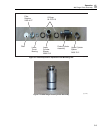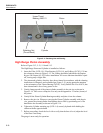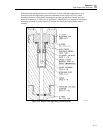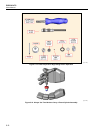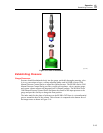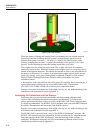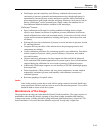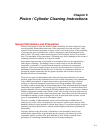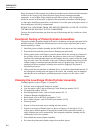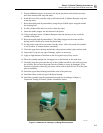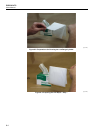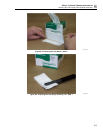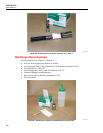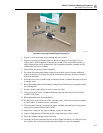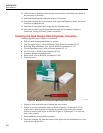6-1
Chapter 6
Piston / Cylinder Cleaning Instructions
General Information and Preparation
When it is necessary to clean the Piston/Cylinder Assembly, the Piston Pressure Gauge
must be partially disassembled and some of the components set aside until later. Upon
removal of the internal components, a degree of risk is involved because of the possibility
of exposing the parts to harmful dirt, corrosive fingerprints, and being dropped to the
table or floor. The small, carbide measuring piston will not likely survive an accidental
drop. The remainder of the components, if dropped, may also be damaged to the extent of
sustaining raised burrs and may no longer be useable.
Each manual operation that is performed on a mechanical device is accompanied by a
finite degree of damage. The damage, however small it may be for the individual
operations, is cumulative. It results from the imperfect execution of each manual
operation. After a given length of time, the device may be expected to fail because of
performance deterioration beyond the level of tolerance. It is important, therefore, to
perform the manual operations with the greatest possible skill in order to keep the
harmful side effects at a minimum.
There are two types of contamination that affect not only the performance of a piston
pressure gauge but also the mechanical state of the critical components. One contaminant
is the ordinary hard particle of matter that scratches and abrades the finely-finished
surfaces as it becomes entrapped between the close-fitting members. The scratches
invariably result in raised edges from the displacement of the metal and spoil the original
relationship of the members. The second type of contaminant is of a chemical nature and
produces harmful effects by attacking the finished metallic surfaces in a corrosive manner.
Ordinary fingerprints contain water-soluble, acidic salts, having extremely high corrosive
activity with the metals of the critical instrument parts. Since these parts must necessarily
be handled in making a piston exchange, they may be protected from exposure to both
types of contaminants by the use of clean paper wipers.
There are a number of industrial paper wipers such as Kimwipes available that are
relatively free of lint. After a little practice, the corrosion-sensitive parts may be safely
handled with these wipers instead of with the bare fingers. Even when using the wipers as
insulators, the hands should first be washed and thoroughly dried before beginning the
disassembly.
The space allotted to the discussion of cleanliness is not intended to imply to the
technician the impossibility of performing the job correctly, but rather to give him
reassurance that the results will be quite satisfactory if he follows common-sense
procedures of eliminating contaminations by use of proper techniques.



